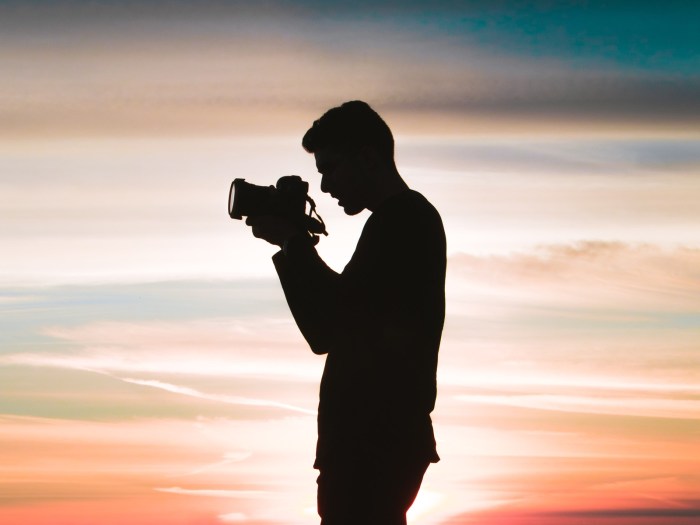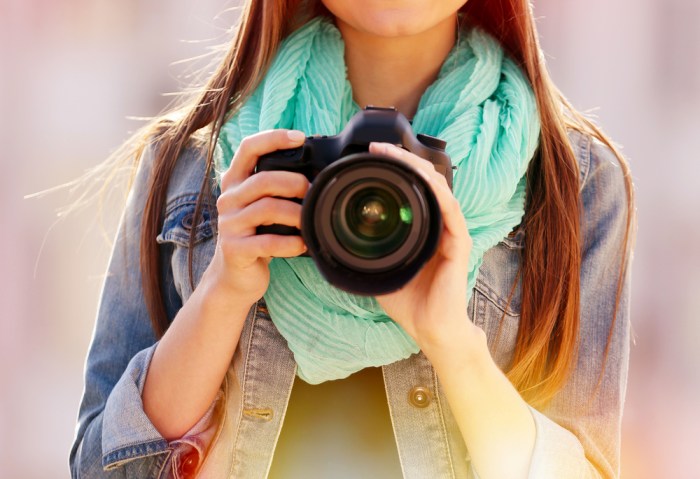Photography Tips for Beginners dives into the essentials of capturing great photos, providing a solid foundation for those just starting out in the world of photography. From understanding camera basics to mastering composition techniques, this guide will help beginners elevate their photography game.
Introduction to Photography Tips for Beginners
Photography is a creative outlet that allows individuals to capture moments and express themselves through images. For beginners, learning photography tips is crucial in honing their skills and improving the quality of their photos.
By following photography tips, beginners can enhance the composition, lighting, and overall aesthetics of their photos. These tips provide guidance on framing, exposure, and post-processing techniques that can take beginner’s photos to the next level.
Benefits of Learning Photography Tips for Beginners
- Improve Composition: Photography tips help beginners understand the rule of thirds, leading lines, and other composition techniques to create visually appealing images.
- Master Lighting: Learning about lighting tips can help beginners utilize natural light or artificial light sources to enhance the mood and atmosphere of their photos.
- Enhance Creativity: Photography tips can inspire beginners to think outside the box and experiment with different angles, perspectives, and editing styles to develop their unique photography style.
- Boost Confidence: As beginners apply photography tips and see improvements in their photos, it can boost their confidence and motivate them to continue exploring and expanding their photography skills.
Understanding Camera Basics

When starting out in photography, it’s crucial to understand the basic settings of your camera to capture great shots. Let’s dive into the essential camera settings and how they can impact your photos.
Essential Camera Settings
- ISO: This setting determines the camera sensor’s sensitivity to light. A lower ISO is ideal for bright conditions, while a higher ISO is best for low-light situations.
- Aperture: The aperture controls the amount of light entering the lens. A lower f-stop number results in a wider aperture, allowing more light in and creating a shallower depth of field.
- Shutter Speed: This setting determines how long the camera’s shutter remains open. A faster shutter speed is useful for capturing fast-moving subjects, while a slower speed can create motion blur for artistic effect.
Adjusting Camera Settings for Better Photos
Now that you know the basics, here are some tips on how to adjust these settings to capture better photos:
- Experiment with different ISO settings to find the right balance between brightness and noise levels in your photos.
- Use a wider aperture (lower f-stop) for portraits to create a blurred background and make your subject stand out.
- Adjust your shutter speed based on the motion of your subject. For fast action shots, opt for a faster speed to freeze the moment.
Composition Techniques for Beginners
Understanding composition techniques is crucial for creating visually appealing photographs. By following certain rules and principles, you can enhance the impact of your images and capture the viewer’s attention.
Rule of Thirds
- The rule of thirds involves dividing your frame into nine equal parts using two horizontal and two vertical lines. By placing your subject or key elements along these lines or at their intersections, you can create a more balanced and interesting composition.
- For example, when taking a portrait, try positioning the subject’s eyes along one of the horizontal lines to draw the viewer’s gaze directly to the focal point.
Framing
- Framing involves using elements within the scene to frame your main subject. This technique can add depth to your composition and guide the viewer’s eye towards the focal point.
- For instance, you can use overhanging branches, doorways, or windows to create a natural frame around your subject, drawing attention to it.
Leading Lines
- Leading lines are elements within a photograph that direct the viewer’s gaze towards the main subject. These lines can be straight, curved, diagonal, or converging.
- For example, a road, a river, or a row of buildings can act as leading lines, guiding the viewer’s eyes towards the focal point of the image.
Symmetry
- Symmetry in photography involves creating balance and harmony by placing elements in a way that creates a mirror image. This can result in visually appealing and calming compositions.
- For instance, capturing a reflection in water or positioning a subject centrally within the frame can create a sense of symmetry in your photograph.
Lighting Tips for Beginner Photographers

When it comes to photography, lighting plays a crucial role in capturing stunning images. Whether you are shooting indoors or outdoors, understanding how to use natural and artificial light effectively can make a huge difference in the quality of your photos.
The Importance of Natural Light in Photography
Natural light is often considered the best type of lighting for photography because of its softness and flattering effect on subjects. Here are some tips for utilizing natural light to enhance your photos:
- Shoot during the golden hour (early morning or late afternoon) for warm, diffused light.
- Position your subject facing the light source to avoid harsh shadows.
- Experiment with backlighting to create a halo effect around your subject.
Tips for Using Artificial Lighting Effectively
While natural light is preferred, artificial lighting can be a lifesaver in low-light conditions or indoor settings. Here are some tips for using artificial lighting to your advantage:
- Invest in a quality external flash for better control over lighting intensity.
- Diffuse harsh artificial light by using modifiers like umbrellas or softboxes.
- Adjust the color temperature of your artificial light source to match the ambient light for a more natural look.
Techniques for Creating Mood and Atmosphere Through Lighting
Lighting can dramatically impact the mood and atmosphere of your photos. Here are some techniques to help you convey different emotions through lighting:
- Use low-key lighting with deep shadows to create a sense of mystery or drama.
- Experiment with colored gels on your light source to add a creative flair to your photos.
- Play with light direction to sculpt your subject and emphasize textures for a more dynamic composition.
Tips for Selecting Subjects and Locations: Photography Tips For Beginners
When it comes to photography, choosing the right subjects and locations can make a huge difference in the quality of your images. Here are some tips to help you select interesting subjects and captivating locations for your photos.
Choosing Interesting Subjects
One of the keys to capturing great photos is choosing interesting subjects that will captivate your audience. Here are some tips for finding the right subjects:
- Look for unique features or details that stand out
- Capture emotions or moments that tell a story
- Experiment with different angles and perspectives to make ordinary subjects look extraordinary
- Consider capturing candid shots for a more natural and authentic feel
Finding the Right Locations, Photography Tips for Beginners
The location where you shoot can greatly impact the overall look and feel of your photos. Here are some tips for finding the perfect locations:
- Scout out locations in advance to find spots with interesting backgrounds or lighting
- Consider the time of day for the best lighting conditions
- Explore both urban and natural settings for a variety of backdrops
- Don’t be afraid to revisit the same location at different times for unique perspectives
Making the Most of Common Surroundings
You don’t always need to travel to exotic locations to capture stunning photos. Here are some tips for making the most of common surroundings:
- Look for beauty in the everyday – a simple street scene or a local park can provide great photo opportunities
- Pay attention to details and textures to add interest to your photos
- Experiment with composition to create visually appealing images even in familiar settings
- Use reflections, shadows, and other elements to enhance your photos
Editing Tips for Beginner Photographers
When it comes to photography, editing plays a crucial role in enhancing your images and bringing out the best in them. Here are some essential editing tips for beginners to help you take your photos to the next level.
Basics of Photo Editing Software
- Choose user-friendly software like Adobe Lightroom or Photoshop Elements to start with.
- Explore the basic tools such as exposure, contrast, saturation, and cropping.
- Watch tutorials online to learn how to navigate the software effectively.
Common Editing Techniques
- Adjusting Exposure: Use exposure settings to brighten or darken your photos for the desired effect.
- Color Correction: Tweak the color balance to ensure accurate and vibrant hues in your images.
- Sharpening: Enhance the details in your photos by applying sharpening techniques.
Enhancing Photos Naturally
- Avoid over-editing: Keep the adjustments subtle to maintain a natural look in your photos.
- Focus on enhancing the overall composition and mood of the image rather than making drastic changes.
- Experiment with different editing tools and techniques to develop your unique style over time.